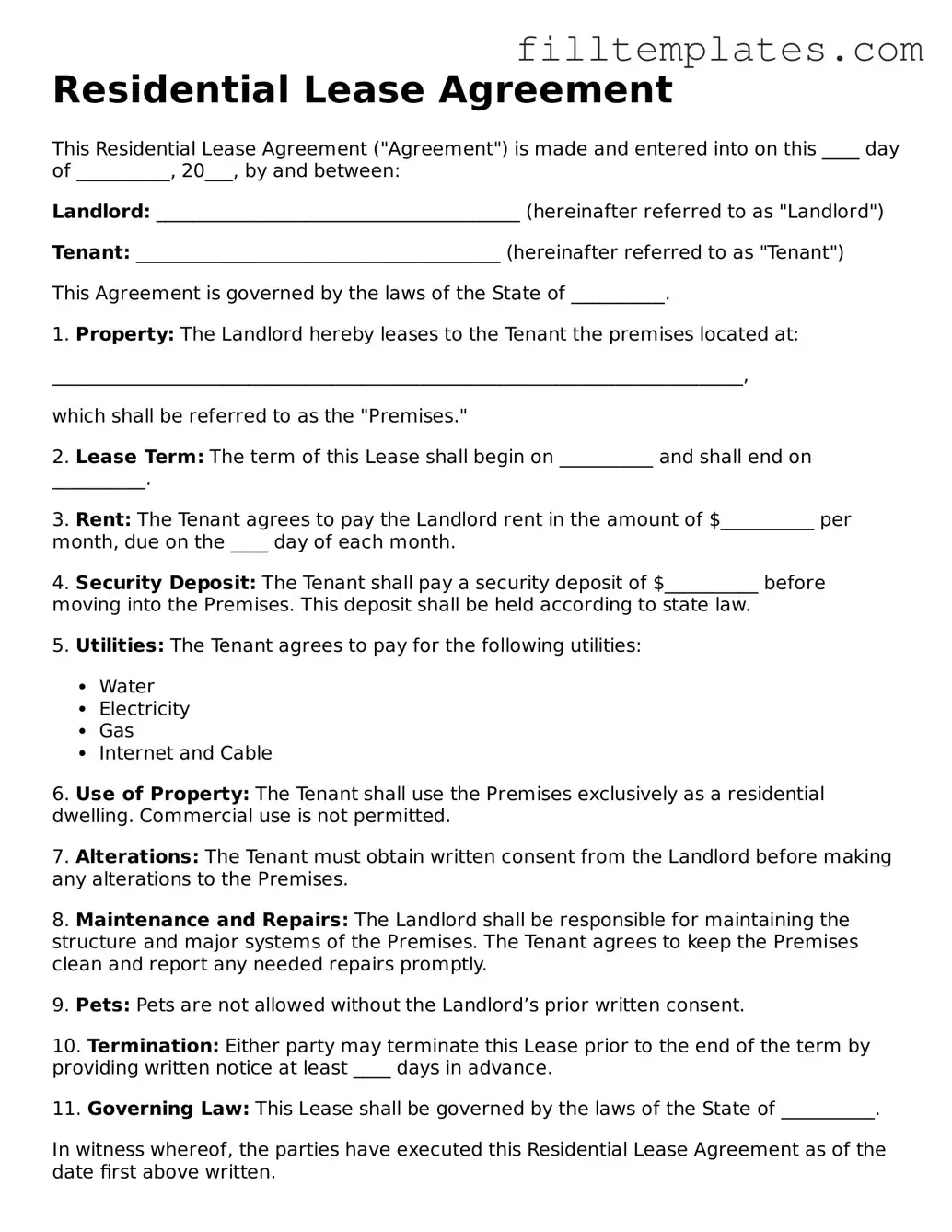Residential Lease Agreement
This Residential Lease Agreement ("Agreement") is made and entered into on this ____ day of __________, 20___, by and between:
Landlord: _______________________________________ (hereinafter referred to as "Landlord")
Tenant: _______________________________________ (hereinafter referred to as "Tenant")
This Agreement is governed by the laws of the State of __________.
1. Property: The Landlord hereby leases to the Tenant the premises located at:
__________________________________________________________________________,
which shall be referred to as the "Premises."
2. Lease Term: The term of this Lease shall begin on __________ and shall end on __________.
3. Rent: The Tenant agrees to pay the Landlord rent in the amount of $__________ per month, due on the ____ day of each month.
4. Security Deposit: The Tenant shall pay a security deposit of $__________ before moving into the Premises. This deposit shall be held according to state law.
5. Utilities: The Tenant agrees to pay for the following utilities:
- Water
- Electricity
- Gas
- Internet and Cable
6. Use of Property: The Tenant shall use the Premises exclusively as a residential dwelling. Commercial use is not permitted.
7. Alterations: The Tenant must obtain written consent from the Landlord before making any alterations to the Premises.
8. Maintenance and Repairs: The Landlord shall be responsible for maintaining the structure and major systems of the Premises. The Tenant agrees to keep the Premises clean and report any needed repairs promptly.
9. Pets: Pets are not allowed without the Landlord’s prior written consent.
10. Termination: Either party may terminate this Lease prior to the end of the term by providing written notice at least ____ days in advance.
11. Governing Law: This Lease shall be governed by the laws of the State of __________.
In witness whereof, the parties have executed this Residential Lease Agreement as of the date first above written.
Landlord Signature: ____________________________
Date: __________
Tenant Signature: _____________________________
Date: __________
